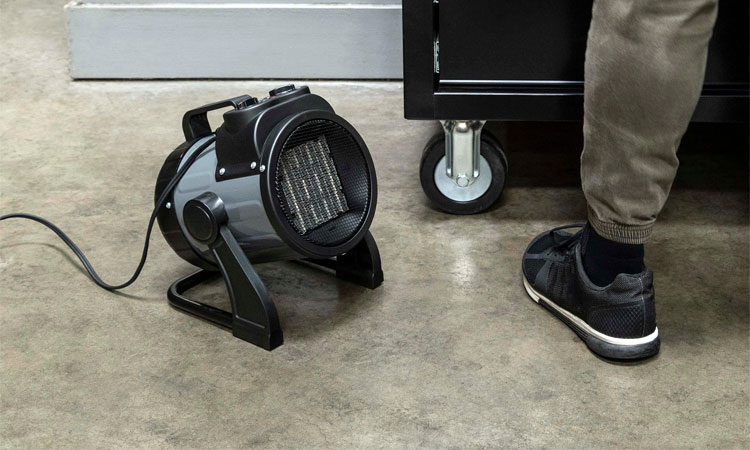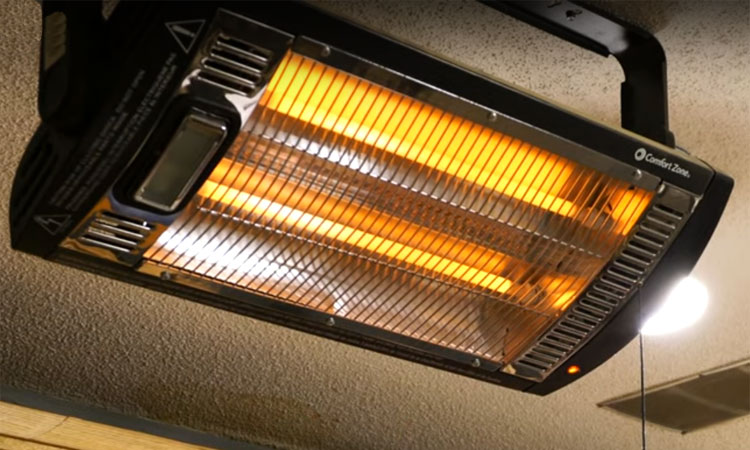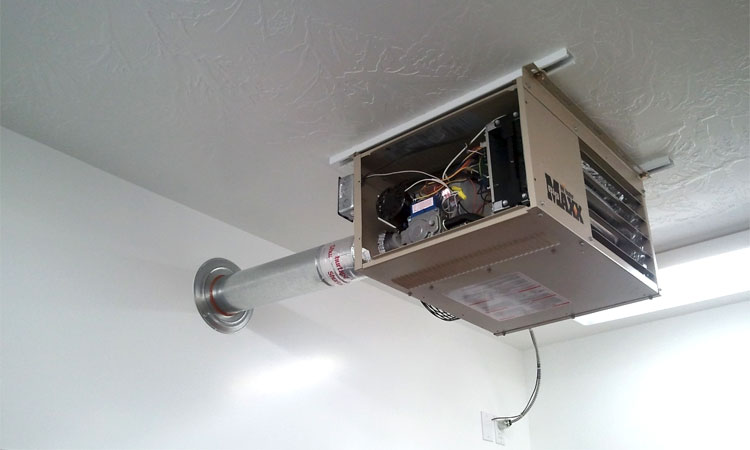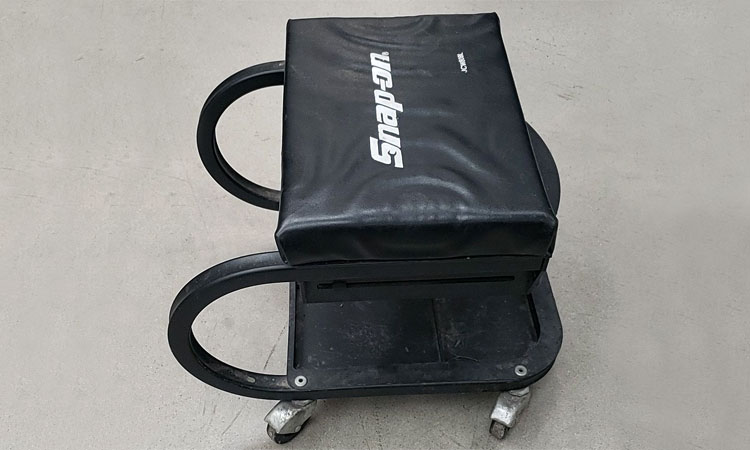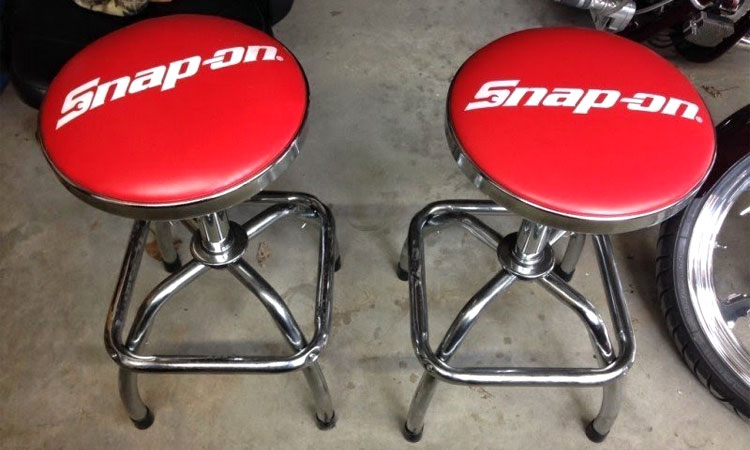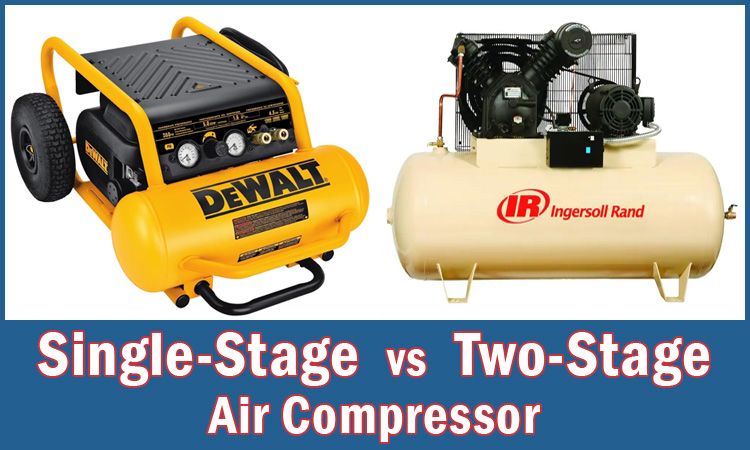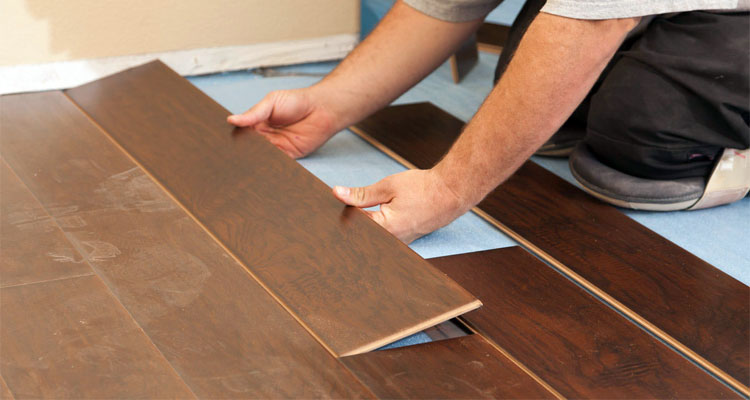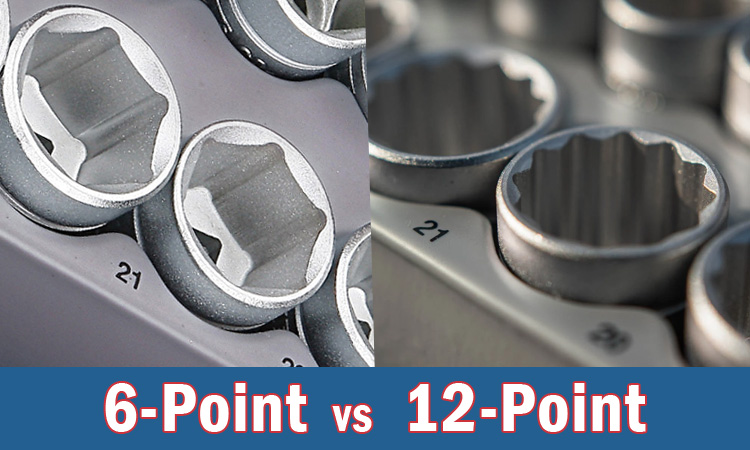Infrared vs Ceramic Heater (Which Is Better for Your Garage?)
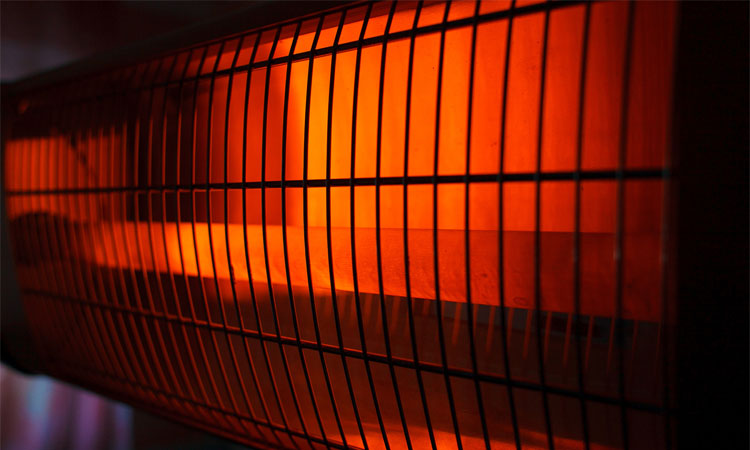
A garage is much more than just a space where you store your car. Many people choose to use this space as a man cave, a spot for friends and football, or an area to sit and relax.
All of these scenarios require a little extra warmth during the winter. While there are different ways to heat a garage, buying the right space heater could be the perfect solution.
But which is the best space heater for your garage: infrared or ceramic? Let’s find out.
Why Use a Space Heater in Your Garage?
We recommend purchasing a quality space heater for your garage to add a little extra warmth and protection to this room, especially during the winter.
There are numerous reasons to put a ceramic or infrared heater in your garage. Here are some of the more popular reasons:
- Protect your home during the winter: Space heaters will keep the garage from getting too cold and prevent damage during the cold months.
- Reduce cold from open doors: The garage is often the main area where you come and go from your house. Having a heating element will help combat the frigid air that follows your family in from the outdoors.
- Protect your property: The cold air can easily damage property, like your vehicles. A heater – like ceramic infrared heaters or carbon heaters – will keep these valuable items safe.
- Create a comfortable workplace: You can keep the area you spend a lot of time in warm and comfortable while you work.
Infrared vs Ceramic Heaters: What Do They Each Do?
While both infrared and ceramic heaters have plenty of benefits when it comes to heating a small space quickly, they differ in many ways. To choose the best heater for your garage, you first need to know how both heaters work.
Infrared Heaters
Infrared heaters use radiant heating to warm a room. Radiant heaters shoot infrared rays in a straight line, warming up any object in its path. Infrared heating does not require the use of airflow to do its job since the rays are the source of warmth.
Because it does not heat the air, infrared heaters will not dry out the room, which means you won’t have to invest in an expensive humidifier to keep your sinuses comfortable.
Ceramic Heaters
A ceramic heater relies on air to heat a space. This appliance sucks in air, draws it across a heated surface (the ceramic plates), then releases the warmed-up air into the room with a fan, which blows warm air to more expansive spaces. This type of heating is known as convection heating.
Some ceramic heaters don’t include a fan and instead radiate heat, warming the area close to the unit. These are known as radiant ceramic heaters.
A Quick Overview
| Infrared Heaters | Ceramic Heaters |
|---|---|
| • Heat on direct contact | • Heat the surrounding air |
| • Radiant heater | • Convection/radiant heater |
| • Typically mounted for placement | • Standalone heater |
| • Heat using infrared rays | • Heat using ceramic plates |
| • Can be powered with electricity, propane, or natural gas | • Powered by electricity |
Infrared vs Ceramic Heaters: Which Is Better for Your Garage?
Both types of heaters are popular choices for a garage. The best space heater for you will depend on which aspects are most important for your particular situation.
Before purchasing a space heater for your garage, consider these factors.
How much are you willing to spend?
Both heaters offer products at a wide range of prices. Infrared heaters typically cost a little bit more than ceramic ones.
Where do you want to keep it?
Ceramic heaters are stand-alone, giving you more options for moving them around the garage.
What size of garage do you want to heat?
Both heaters come with various coverage abilities, but the more space you want to heat, the more it will cost you.
What features are important to you?
Infrared and ceramic heaters will come with a variety of features, from remote control options to smart technology and more. Choosing the right heater depends significantly on which features are most important to you.
Is it safe?
Safety is the #1 feature to consider when buying a new heater for your garage. If you have small kids or pets, you want a heater with plastic grates to prevent burns. You also want to ensure your heater has all the best safety features in places, such as automatic shut-off and tip-over protection.
Now that you have a pretty good idea as to what each of these products is and what they do, let’s get into the comparison. Which is better for your garage: an infrared or ceramic heater?
Best in Space Coverage: Ceramic
The size of your garage will play a significant role in which type of heater to buy. A larger area to cover will require a larger heater and a greater distance in air circulation.
Infrared heaters provide users with good coverage and can warm up most small spaces very well. But because they heat by direct contact, the warm air must be pushed around the room.
On the other hand, ceramic heaters work by heating the air and blowing it in every direction, spreading warmth around the room evenly and quickly. Even if your ceramic heater doesn’t utilize a fan to push the air around the room, it still provides more coverage because it heats the air, not just the objects in its path.
Best in Portability: Ceramic
Typically, when you put a heater in your garage, you are going to want the ability to move it around, depending on where you will be working most of the time that day. Many people also enjoy taking the heater into their home to use in other rooms if it isn’t being utilized in the garage.
Even though infrared heaters have a slim design, they are often made to hang on walls or attach to surfaces. These heaters are portable, but it can be a hassle to move them from room to room.
Ceramic heaters are the better option when it comes to portability. This is because these small space heaters are stand-alone units that aren’t fastened down. When you want to move the heater around the garage or take it into another room, you simply unplug it and carry it with you.
Best in Noise Quality: Infrared
Some people won’t find a noisy heater in their garage to be too much of an issue, especially if the space is only used for fixing up and storing cars. Yet many people these days use their garages for much more than just parking their vehicles.
If you use your garage as a place to gather during football games or to sit and relax during your days off, a noisy space heater could be a problem.
If you want peace and quiet in your garage, go with an infrared heater. Whereas most heaters, like ceramic ones, use a noisy fan to distribute heat, infrared heaters do not.
Because these heaters generate heat without a fan unit, they are nearly silent.
Best in Maintenance: Infrared
Another thing to consider when choosing a heater for your garage is the maintenance it requires. There are many moving and working parts in ceramic heaters, which can seize up and require cleaning every so often.
In contrast, infrared heaters don’t require much maintenance at all. Because the heater doesn’t require moving parts, it won’t be necessary to lubricate or clear out anything.
In most cases, all you must do to clean infrared heaters is wipe them down to remove any built up dirt and debris. Or, worst-case scenario, wash it if a spill occurs.
Best in Cost Effectiveness: Ceramic
Many people try to find the most affordable option when buying a space heater for their garage. I mean, who isn’t looking to save a few bucks where they can?
Infrared technology is much newer than convection heating, so you will find that these types of heaters will cost more than ceramic heaters with similar features and sizes. Plan on forking over between $50-$500.
Ceramic heaters are cheaper since they have been around for quite some time – much longer than infrared heaters. There are also more options to choose from in today’s market. If you want something small to heat a tiny space, you won’t pay more than $15 or $20 for one of these products.
For something a bit larger with special features, you’ll be looking at a price tag of around $200, with tons of options in between.
Best in Energy Efficiency: Infrared
You should not only consider the cost of the heater itself, but what you will have to pay for the energy used by that heater every month. For that reason, you should pick the option that is more energy-efficient, and therefore more cost-efficient in the long run.
If you use a ceramic heater, you will notice a higher energy bill. This is mainly because they must run longer than infrared heaters to maintain the temperature. Ceramic heaters need to consistently heat the air in the room to keep you warm.
Infrared heaters save on energy because they don’t need to run for as long as ceramic ones. These heaters deliver warm rays to whatever or whoever is in front of them. These rays will keep you warm no matter the temperature around you.
Another good thing about infrared heaters is that you can also use natural gas or propane to heat them. This is a much cheaper way to heat your garage than with electricity.
Best in Safety: Both
According to the National Fire Protection Association, an average of 48,530 house fires are associated with heating equipment each year. Of those, 44% were caused by space heaters. Even scarier, space heaters caused 81% of the deaths resulting from these fires.
While these small, portable heaters are a fantastic way to keep your garage nice and toasty, they can also be dangerous when not used properly.
Luckily, most manufacturers these days put many safety features in place to help prevent your space heater from starting a fire in your home.
These features include:
- Automatic shut-off: This feature shuts the unit down automatically if it starts to overheat.
- Thermostat: This feature lets the heater know when the room temperature is just right and shuts it down when it reaches a specific temperature.
- Tip-over switch: This feature automatically shuts off the unit if it tips over to prevent a fire.
- Plastic grills: This feature keeps the front of the heating unit cool to the touch to prevent severe burns.
No matter which heater you choose for your garage, you want to ensure it has all these safety features to keep your home and family safe.
Infrared Heaters Vs. Ceramic Heaters: Pros and Cons
Do you still need help deciding which heater is best for your garage? Let’s take a quick look at the pros and cons of each option.
Ceramic Heater Pros
#1 – More Options to Choose From
There is a vast selection of space heaters on the market.
#2 – Transport Easily
Most ceramic heaters are lightweight and can easily be moved from one area to another.
#3 – Heat Up Faster
Ceramic heaters have the advantage of a fan, which blows the warm air around quickly.
#4 – More Affordable
Ceramic heaters are typically the cheaper option for space heaters.
#5 – Cool Down Fast
These heaters cool down almost immediately after being turned off.
Ceramic Heater Cons
#1 – More Costly to Use
Ceramic heaters only run on electricity and will cost you more money each month to use.
#2 – Require More Maintenance
These units require more care with moving parts such as the fan.
Infrared Heater Pros
#1 – Highly Efficient
This option heats on contact, wasting no heat or energy.
#2 – Easy to Maintain
Infrared heaters don’t require much maintenance since they don’t have many moving parts.
#3 – Work Quietly
Infrared heaters typically make little-to-no noise while running.
#4 – Won’t Dry Out the Air
Because these heaters heat on contact and not by warming the air in the room, they won’t dry your skin or require a humidifier in the garage.
#5 – Can Be Powered in Multiple Ways
You can buy an infrared heater that runs on electricity, natural gas, or propane.
Infrared Heater Cons
#1 – Harder to Transport
Many infrared heaters are large or require mounting to walls or surfaces.
#2 –Only Heat on Contact
To keep warm with an infrared heater, you must be in the direct path of the rays.
And the Verdict Is …
Both infrared and ceramic heaters are great options to heat your garage. The only way to pick a side is to base your decision on your specific needs. A ceramic heater is the better choice if you have a large garage that you want to warm up quickly when coming in from a snowball fight.
If you have a smaller space where you like to sit and watch television or read during the cooler months, an infrared heater will work very well for you.

